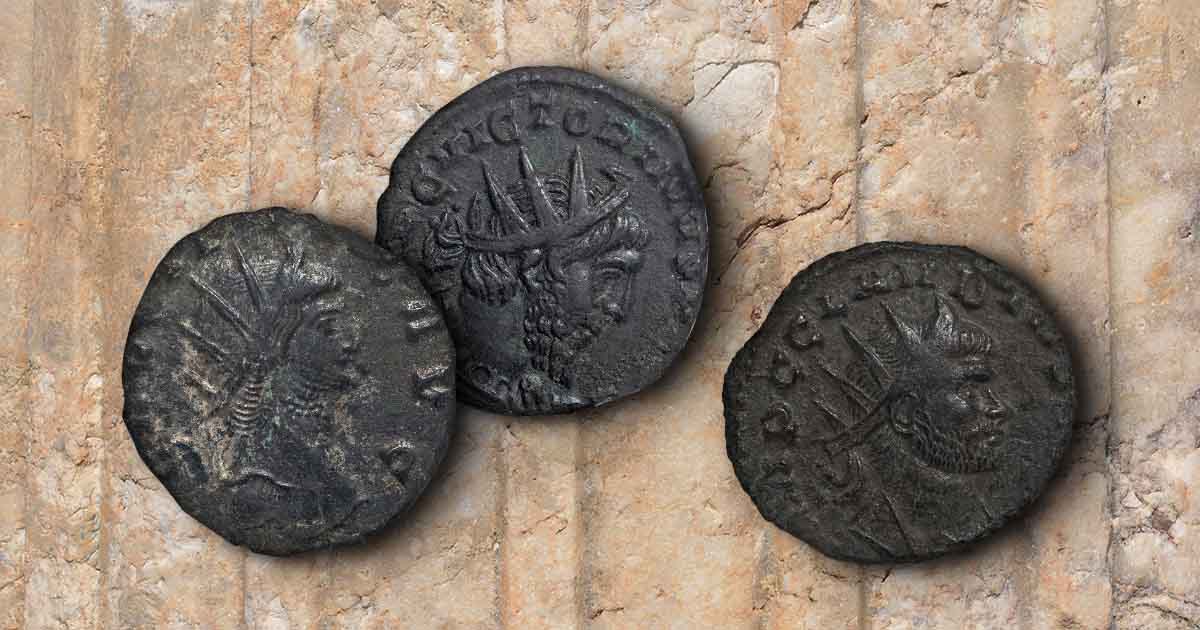
The Bicknor coin hoard, a remarkable ancient Roman Empire coin hoard of nearly 1,500 coins, was found in the English countryside in 2018. Found near iron mines used during the Roman era, experts believe it had been concealed for nearly 1,700 years before its discovery.
How was the Bicknor Coin Hoard Found?
On January 7, 2018, an English man was using a metal detector to search for buried metal outside of Bicknor, Gloucestershire. He was searching a grassy field divided by an old stone boundary wall near the English town of 408 when his detector emitted a strong signal. As he continued along the wall, his detector continued alerting him to the presence of metal under his feet.
He started digging into the soft ground and began finding ancient Roman coins several feet under the surface. The first coins were by themselves and grouped in small bunches of two to eight pieces. After a little bit more digging, the man had dug a 6 foot long trench and uncovered more than 600 coins. At that point, he contacted Kurt Adams, his county’s Find Liaison Officer.
Adams and his team spent the next two days unearthing another 750 coins. There was no container, bag, or vessel found at the site. The report covering the Bicknor excavation described the organization of the hoard “…as if someone has taken several handfuls of coins and scattered them in the soil.” Almost all the hoard was found on the west side of the base of the wall. The wall was reduced to rubble over the millennia, and the location indicates that the wall dates to the Roman era and was standing when the coins were buried.
When were the Coins in the Bicknor Hoard Struck?
The coins were struck between 253 and 274, AD, although there were counterfeits, irregularities, and several that were too worn or poorly struck to identify. Following a detailed analysis of the coins, they were turned back over to the finder and landowner.
What Coins were in the Bicknor Hoard?
The Bicknor Hoard held one coin type: the antoninianus. There were 1,485 of them from the reign of at least 13 Roman leaders. The antoninianus was slightly larger than the denarius and had a value of two denarii. The antoninianus was made from silver billon and is commonly referred to today as a double denarius. The coins were in fair to fine condition.
Coins Found in the Bicknor Coin Hoard
The third century was a time of political turmoil in the Roman Empire. Numerous leaders and Emperors ruled for short periods, and some reigns were as brief as two or three months. Some of the years of reign will overlap as the emperors listed may have ruled over the Roman Empire or Gallic Empire. The children of some leaders assumed power before their father had abdicated the seat or passed away, as in the case of rulers like Tetricus II.
| Emperor | Number Found | Years of Reign/Issue |
| Valerian | 3 | 253-260 AD |
| Gallienus | 151 | 253-268 AD |
| Salonina* | 15 | 253-268 AD |
| Claudius II | 109 | 268-270 AD |
| Divus Claudius II (Posthumous Issue) | 13 | 270 AD |
| Quintillus | 8 | 270 AD |
| Aurelian | 2 | 270-275 AD |
| Postumus | 17 | 260-269 AD |
| Marius | 3 | 269 AD |
| Victorinus | 278 | 269-271 AD |
| Tetricus I | 532 | 271-274 AD |
| Tetricus II | 257 | 273-274 AD |
| Uncertain Gallic empire | 52 | |
| Uncertain** | 23 | |
| Irregular | 22 |
**This entry includes coin fragments




